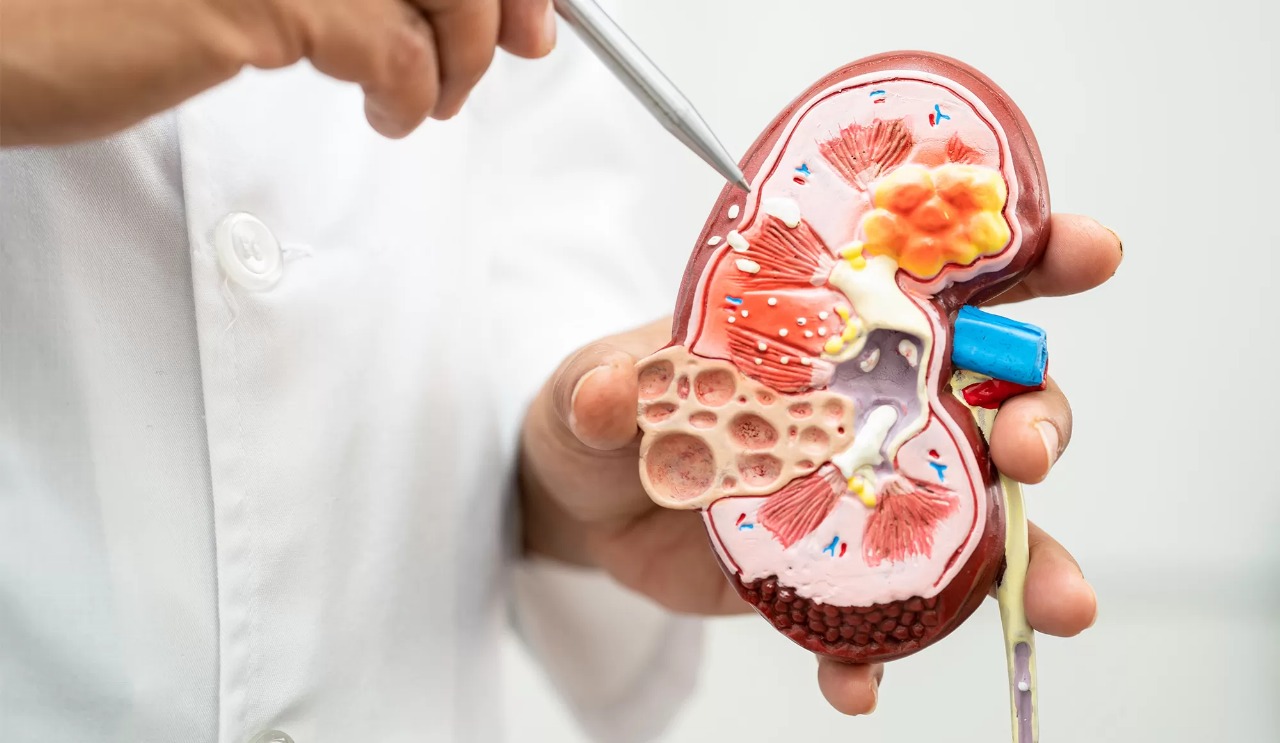Kidney Stone
Home - Kidney Stone

Kidney Stone
A kidney stone, also called a renal calculus, is a hard deposit that forms in the kidneys. It is composed of minerals and salts, primarily calcium oxalate or calcium phosphate, but can also contain other substances like uric acid or struvite (magnesium ammonium phosphate). Kidney stones vary in size, ranging from tiny crystals that pass through the urinary system unnoticed to larger stones that can cause significant pain and complications.
Kidney stones form when there is an imbalance in the urine concentration, leading to the crystallization of minerals and substances present in the urine. Several factors contribute to the formation of kidney stones, including dehydration, certain dietary habits (such as a high intake of oxalate-rich foods like spinach and chocolate), family history of kidney stones, certain medical conditions (such as hyperparathyroidism or urinary tract infections), and certain medications.
The symptoms of kidney stones can vary depending on their size and location within the urinary system. Small stones may not cause any noticeable symptoms and can pass through the urinary tract without intervention. However, larger stones can cause severe pain in the back or side (often referred to as renal colic) that radiates to the lower abdomen and groin. Other symptoms may include blood in the urine, frequent urination, cloudy or foul-smelling urine, and a persistent urge to urinate.
Kidney Stone Treatments & Surgery
Minimal Invasive PCNL Surgery
Kidney stone surgery, also known as kidney stone removal surgery or surgical intervention for kidney stones, is a medical procedure performed to treat larger kidney stones that cannot pass naturally or are causing severe symptoms and complications. A PCNL begins with us making a small incision in the skin. Then, a small camera is inserted into the kidney and a specialized instrument is used to break the kidney stone up into smaller pieces and suction the pieces out.
Percutaneous nephrolithotomy is a surgical treatment to remove kidney stones from the body when they cannot pass on their own. It is a minimally invasive procedure. Percutaneous refers to through the skin. A pathway from the skin on the back to the kidney is made possible by the surgery. A tiny tube is then inserted, allowing the surgeon to use special tools to break the kidney stones into smaller pieces. The tube is used to extract the broken stones.
Minimally invasive surgery for kidney stones is called RIRS - Retrograde Intrarenal Surgery. It is the least invasive technique for performing surgery within the kidney, using a viewing tube known as a fiberoptic endoscope. To access the kidney through the urinary tract, it uses a thin, flexible tube equipped with a camera and laser. The surgeon next uses a laser to break the kidney stones into small pieces, allowing them to travel out of the body through urine.
